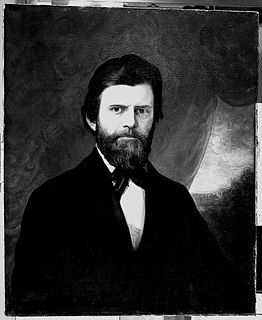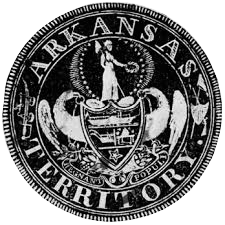Speaker of the Legislative Assembly is a title commonly held by presiding officers of parliamentary bodies styled legislative assemblies. The office is most widely used in state and territorial legislatures in Australia, and in provincial and territorial legislatures in Canada.
Examples follow.
In government, unicameralism is the practice of having a single legislative or parliamentary chamber. Thus, a unicameral parliament or unicameral legislature is a legislature which consists of a single chamber or house.

The speaker of a deliberative assembly, especially a legislative body, is its presiding officer, or the chair. The title was first used in 1377 in England.

The Parliaments of the Australian states and territories are legislative bodies within the federal framework of the Commonwealth of Australia.

The North Dakota Legislative Assembly is the state legislature of the U.S. state of North Dakota. The Legislative Assembly consists of two chambers, the lower North Dakota House of Representatives, with 94 representatives, and the upper North Dakota Senate, with 47 senators. The state is divided into 47 constituent districts, with two representatives and one senator elected from each district. Members of both houses are elected without term limits. Due to the Legislative Assembly being a biennial legislature, with the House and Senate sitting for only 80 days in odd-numbered years, a Legislative Council oversees legislative affairs in the interim periods, doing longer-term studies of issues, and drafting legislation for consideration of both houses during the next session.

The Legislative Assembly of the Northwest Territories, or Legislative Council of the Northwest Territories, is the legislature and the seat of government of Northwest Territories in Canada. It is a unicameral elected body that creates and amends law in the Northwest Territories. Permanently located in Yellowknife since 1993, the assembly was founded in 1870 and became active in 1872 with the first appointments from the Government of Canada.

The Washington State Legislature is the state legislature of the U.S. state of Washington. It is a bicameral body, composed of the lower Washington House of Representatives, composed of 98 Representatives, and the upper Washington State Senate, with 49 Senators plus the Lieutenant Governor acting as president. The state is divided into 49 legislative districts, each of which elect one senator and two representatives.
A Member of the Legislative Assembly (MLA), is a representative elected by the voters of a state constituency to the state legislative assembly of a sub-national jurisdiction.

The Utah State Legislature is the state legislature of the U.S. state of Utah. It is a bicameral body, comprising the Utah House of Representatives, with 75 state representatives, and the Utah Senate, with 29 state senators. There are no term limits for either chamber.

The House of Assembly of the British Virgin Islands, until 2007 known as the Legislative Council, has 15 members: 13 directly elected for four-year terms, and two ex officio members.
The following is the Australian Table of Precedence.

The Legislature of the Virgin Islands is the territorial legislature of the United States Virgin Islands. The legislative branch of the unincorporated U.S. territory is unicameral, with a single house consisting of 15 senators, elected to two-year terms without term limits. The legislature meets in Charlotte Amalie on the island of St. Thomas.
A state legislature is a legislative branch or body of a political subdivision in a federal system.

The Provisional Legislature of Oregon was the single-chamber legislative body of the Provisional Government of Oregon. It served the Oregon Country of the Pacific Northwest of North America from 1843 until early 1849 at a time when no country had sovereignty over the region. This democratically elected legislature became the Oregon Territorial Legislature when the territorial authorities arrived after the creation of the Oregon Territory by the United States in 1848. The body was first termed the Legislative Committee and later renamed the House of Representatives. Over the course of its six-year history the legislature passed laws, including taxation and liquor regulation, and created an army to deal with conflicts with Native Americans.

Oregon's Territorial Legislature was a bicameral legislative body created by the United States Congress in 1848 as the legislative branch of the government of the Oregon Territory. The upper chamber Council and lower chamber House of Representatives first met in July 1849; they served as the region's legislative body until Oregon became a state in February 1859, when they were replaced by the bicameral Oregon State Legislature.
State governments in India are the governments ruling over 28 states and 8 union territories of India and the head of the Council of Ministers in a state is the Chief Minister. Power is divided between the Union government and state governments. While the Union government handles defence, external affairs etc., the state government deals with internal security and other state issues. Income for the Union government is from customs duty, excise tax, income tax etc., while state government income comes from sales tax (VAT), stamp duty etc.; now these have been subsumed under the various components of the Goods and Services Tax
The prefix The Honourable, abbreviated to The Hon., Hon., or The Hon'ble, is an honorific style that is used before the names of certain classes of people.

The 1848 gubernatorial election in Wisconsin was held on May 8, 1848. This was the election for the first Governor of Wisconsin, which became a U.S. state that year, as it was held concurrent with a public referendum to ratify the Constitution of Wisconsin.
The eighth Minnesota Territorial Legislature first convened on January 7, 1857. The 15 members of the Minnesota Territorial Council were elected during the General Election of October 9, 1855, and the 38 members of the Minnesota House of Representatives were elected during the General Election of October 14, 1856. The eighth territorial legislature was the final territorial legislature held before the Territory of Minnesota was dissolved and Minnesota was admitted as a state.

The General Assembly of the Territory of Arkansas, commonly known as the General Assembly, was the legislature of the U.S. territory of Arkansas, from 1819 to 1835. The General Assembly was directly elected, albeit on a restricted franchise. Its legislative power was subject to veto by the appointed Governor.